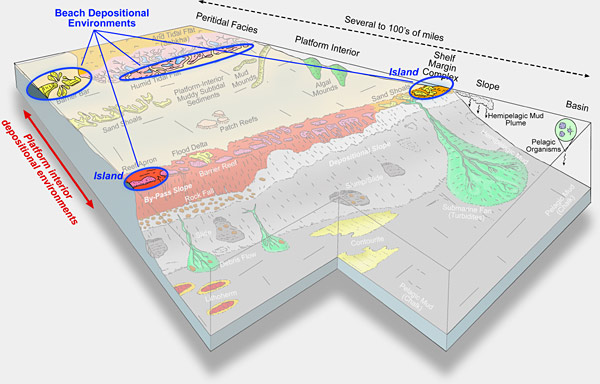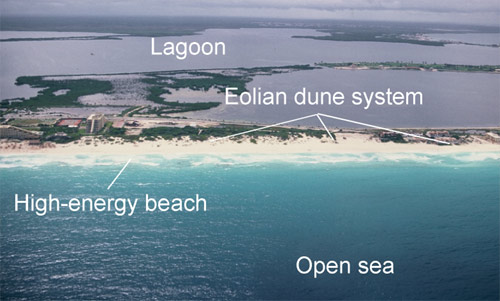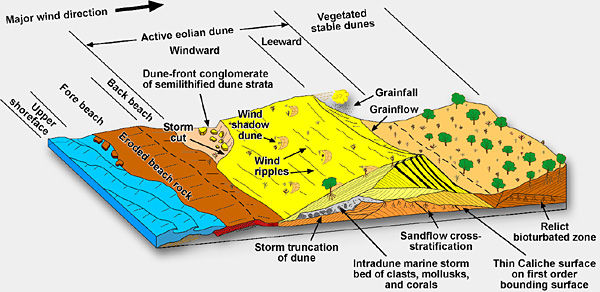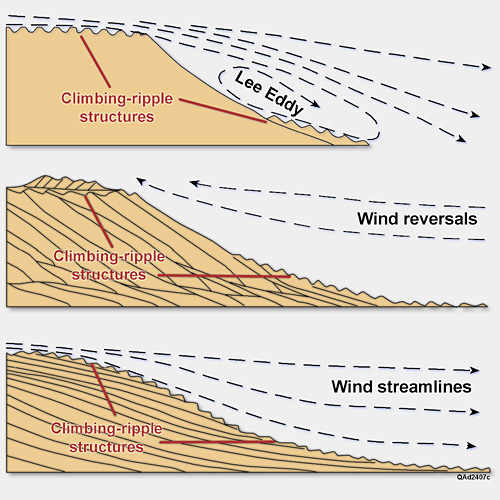| |
|
Carbonate Eolian
Dune Stratification Types
Hunter
(1977) and Loucks and Ward (2001) have described the stratification
and other features of coastal dunes.
Climbing
Translatent Stratification (Wind-Ripple Laminations):
The laminae are generated as wind ripples migrate across
the dune. The ripples produce thin, isopachous laminae on
low-angle slopes. |
| |
Schematic
diagram showing the development of wind ripple laminations.
Modified from Hunter (1977). |
| |
|
|
 |
|
| |
example:
Isla Cancun |
|
example:
Jamaica |
|
|
|
|
| Grainfall
Lamination: They develop on leeward sides of dunes.
The airborne grains fall onto the foreset slope, forming relative
high-angle and uniform, but diffuse laminae that commonly
pinch out downdip. |
|
Schematic
diagram showing the development of grain-fall laminations.
Modified from Hunter (1977).
|
| |
|
|
 |
|
| |
example:
Isla Cancun |
|
example:
Jamaica |
|
|
| |
| |
| |
| Sandflow
Cross-Stratification: They are generated by avalanching
of tongue-shaped and cone-shaped masses of non-cohesive
sand down foreset slip faces whose inclination is at the
angle of repose. |
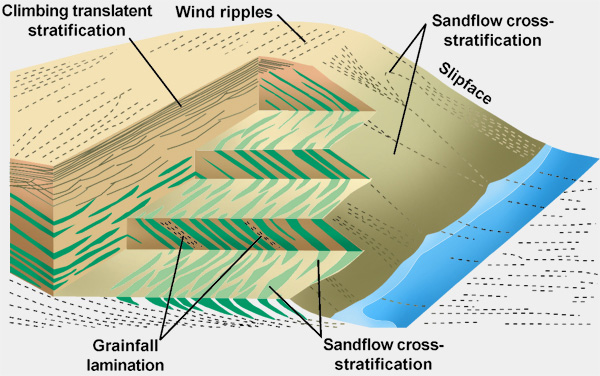 |
| |
| |
|
|
 |
|
| |
example:
Isla Cancun |
|
example:
Jamaica |
|
|
| |
| Dune-Front
Conglomerates: Deposits of eroded eolianite clasts
produced where storm waves erode the seaward side of weakly
to well lithified dunes. |
|
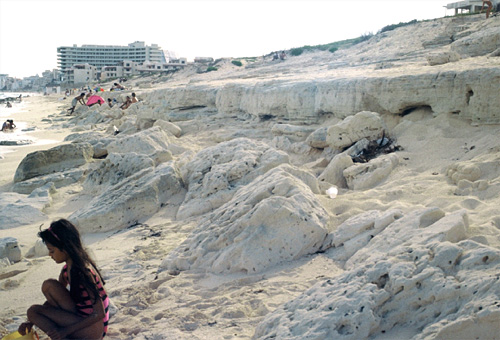 |
Dune-front
conglomerate formed by erosion of the toe of the dune.
From Loucks and Ward (2001). |
|
| |
| |
| |
| Intradune
Marine Storm Deposits:
As a dune is decapitated during a storm, reworked marine sediments
are deposited on the eroded surface. Boulder-sized material
can be transported onto this surface |
| |
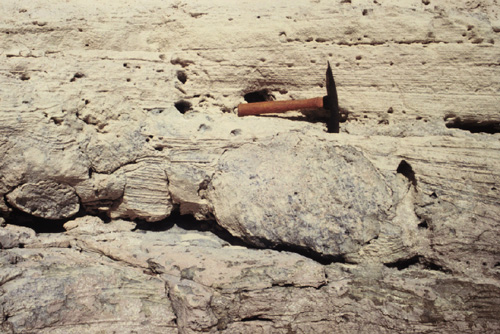 |
| Isla Cancun
outcrop showing intradune marine storm deposits composed
of corals and clasts. From Loucks and Ward (2001). |
|
| |
|
| |
|
|
|




